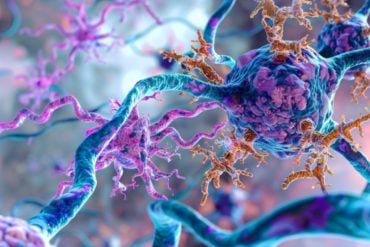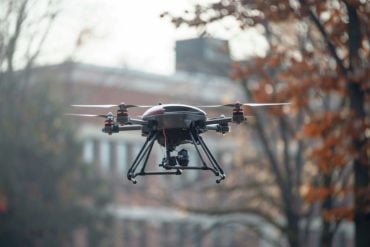Summary: Researchers have identified 14 genetic regions linked to activity.
Source: UK Biobank.
Time spent sitting, sleeping and moving is determined in part by our genes, University of Oxford researchers have shown.
In one of the most detailed projects of its kind, the scientists studied the activity of 91,105 UK Biobank participants who had previously worn an activity monitor on their wrist for a week.
The scientists taught machines to automatically identify active and sedentary life from the huge amounts of activity monitor data.
They then combined this data with UK Biobank genetic information to reveal 14 genetic regions related to activity, seven new to science, they report in Nature Communications today.
The work paves the way for better understanding of sleep, physical activity, and their health consequences.
Further analysis of the human genetic data showed for the first time that increased physical activity causally lowers blood pressure.
Physical inactivity is a global public health threat and is associated with a range of common diseases including obesity, diabetes and heart disease. Changes in sleep duration are linked to heart and metabolic diseases and psychiatric disorders.
The genetic analysis also showed overlap with neurodegenerative diseases, mental health wellbeing and brain structure, showing an important role for the central nervous system with respect to physical activity and sleep.
Dr Aiden Doherty, who led the work and is based at the Big Data Institute, University of Oxford, said: “How and why we move isn’t all about genes, but understanding the role genes play will help improve our understanding of the causes and consequences of physical inactivity.
“It is only by being able to study large amounts of data, such as those provided by UK Biobank, that we are able to understand the complex genetic basis of even some of the most basic human functions like moving, resting and sleeping.”
The study was funded by the National Institute for Health Research (NIHR) Oxford Biomedical Research Centre, and the British Heart Foundation Centre of Research Excellence at Oxford. The study was collaborative, and performed by a multidisciplinary team of scientists from a diverse set of fields, including machine learning, genetics, statistics, and epidemiology.
The use of machine learning in big healthcare datasets is advancing quickly, and having a profound effect on the sorts of studies that can be carried out, Dr Karl Smith-Byrne, one of the lead analysts of the study said.

“We have carefully developed machine learning models to teach machines how to analyse complex functions like activity,” he said. “These models provide exciting new insights into human movement behaviours in large studies such as UK Biobank with its half a million participants.”
Professor Michael Holmes, a BHF Intermediate Clinical Research Fellow, said: “This provides scientists with a wonderful opportunity to learn much more about how genes and environment interact in our daily lives, causing us to move as we do, and possibly putting us at increased risk of disease. For instance, it might help us determine whether inactivity is a cause or a consequence of obesity.”
To help identify the types of activity recorded on the wrist monitors, the researchers turned to 200 volunteers who wore a special camera that captured their activity every 20 seconds over two days. The images were compared with the activity data captured by the wrist worn monitors, providing a guide to interpreting the data.
Funding: The study was funded by the National Institute for Health Research Oxford Biomedical Research Centre, British Heart Foundation Centre of Research Excellence at Oxford.
Source: Andrew Trehearne – UK Biobank
Publisher: Organized by NeuroscienceNews.com.
Image Source: NeuroscienceNews.com image is in the public domain.
Original Research: Open access research for “GWAS identifies 14 loci for device-measured physical activity and sleep duration” by Aiden Doherty, Karl Smith-Byrne, Teresa Ferreira, Michael V. Holmes, Chris Holmes, Sara L. Pulit & Cecilia M. Lindgren in Nature Communications. Published December 10 2018.
doi:10.1038/s41467-018-07743-4
[cbtabs][cbtab title=”MLA”]UK Biobank”Genetic Changes Associated with Physical Activity.” NeuroscienceNews. NeuroscienceNews, 10 December 2018.
<https://neurosciencenews.com/genetics-physical-activity-10322/>.[/cbtab][cbtab title=”APA”]UK Biobank(2018, December 10). Genetic Changes Associated with Physical Activity. NeuroscienceNews. Retrieved December 10, 2018 from https://neurosciencenews.com/genetics-physical-activity-10322/[/cbtab][cbtab title=”Chicago”]UK Biobank”Genetic Changes Associated with Physical Activity.” https://neurosciencenews.com/genetics-physical-activity-10322/ (accessed December 10, 2018).[/cbtab][/cbtabs]
Abstract
GWAS identifies 14 loci for device-measured physical activity and sleep duration
Physical activity and sleep duration are established risk factors for many diseases, but their aetiology is poorly understood, partly due to relying on self-reported evidence. Here we report a genome-wide association study (GWAS) of device-measured physical activity and sleep duration in 91,105 UK Biobank participants, finding 14 significant loci (7 novel). These loci account for 0.06% of activity and 0.39% of sleep duration variation. Genome-wide estimates of ~ 15% phenotypic variation indicate high polygenicity. Heritability is higher in women than men for overall activity (23 vs. 20%, p = 1.5 × 10−4) and sedentary behaviours (18 vs. 15%, p = 9.7 × 10−4). Heritability partitioning, enrichment and pathway analyses indicate the central nervous system plays a role in activity behaviours. Two-sample Mendelian randomisation suggests that increased activity might causally lower diastolic blood pressure (beta mmHg/SD: −0.91, SE = 0.18, p = 8.2 × 10−7), and odds of hypertension (Odds ratio/SD: 0.84, SE = 0.03, p = 4.9 × 10−8). Our results advocate the value of physical activity for reducing blood pressure.






